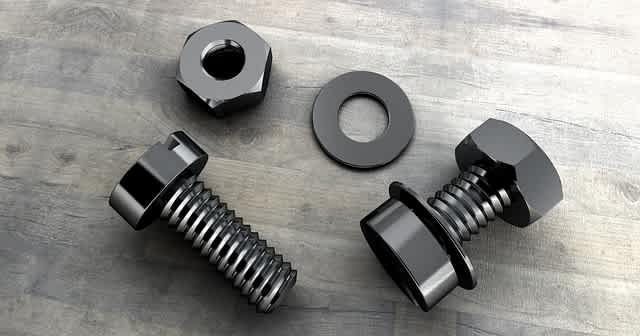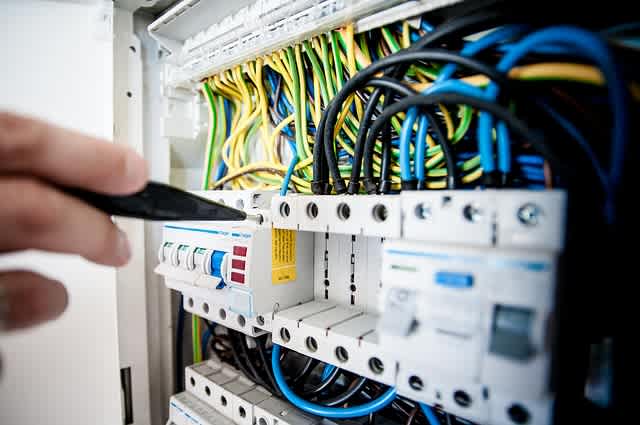Magnetic door lock troubleshooting #
Magnetic door locks are a versatile and an affordable access control mechanism for keeping unwanted visitors out of your premises. Once users and security staff get used to their convenience, magnetic door locks can be easily neglected, therefore enduring various malfunctions. Apart from taking care to prevent unauthorized access by setting up a robust access control system, it’s useful to have basic knowledge of how to fix locks, if not for doing the job yourself, at least with the purpose to know when something is wrong and needs to be fixed.
Magnetic doors are made of various materials, for instance, they can contain iron, aluminum, zinc, copper or a combination of metals and alloys. They are also made of dozens of tiny parts, screws, hinges and magnets, including cabling with different width and length.
If you understand something about disassembling a door lock, you’ll get a clear idea that the sensitive release-lock mechanism can wear out quickly, especially if the budget for the access control unit is limited.
Since locks are attached to doors made out of materials such as wood, metal or plastic, using a number of adhesives and colors, many issues can arise in that area, and create problems with overall security.
Time, weather, frequent use, inadequate operations, poor inspection and control, insufficient or unstable power supply, and lack of staff awareness are additional factors that impact their proper functioning. Despite taking care to make them sturdy and enduring, factors like costs often weigh in and can endanger the outside perimeter security when you least want it to.
Though you may want to leave certain troubleshooting issues to professionals, at times the answer to the question “How to fix a lock?” is as simple as replacing a worn out hinge, adjusting a screw or checking power efficiency.

Having said that, what are some of the most common magnetic lock malfunctions you need to pay attention to?
Possible Problems #
- Physical weariness. The latch may not be properly placed in the electric striker, the magnetic lock may not be properly aligned due to mechanical force or weariness, and the power supply to the striker can be insufficient. Problems with physical materials, either of the door and the frame, or the door lock itself also belong to this group, such as rust, damp, weather conditions/extreme temperatures, and can affect the fixtures between the elements, causing issues. Bad fitting of the “wobbly bolt” - the mechanism that consists of the striking plate that gets sucked onto the magnet can affect the whole lock/release system.
- Electrical malfunctioning. Electrics mainly come down to three main problems - poor power supply, issues with the electronic equipment/software, and low-quality cables. Power supply cannot perform as requested in case of power outages. Cables can be either too thin or break easily.

- Failure to release and lock. The root problems of magnetic door locks explained above can disrupt the automatic door closer (an error of over 10mm is considered a serious malfunctioning problem) and limit the power supply to the magnetic lock from the source or because of improper cable installation. Common “failure to release” problems are associated with the power source, and the common “failure to lock: problems are associated with the door, including poorly hung door, the door frame getting warped, twisted or bowed, worn out tears and hinges or improperly installed door closers.
Troubleshooting Steps #
Here are the main troubleshooting methods you can use to tackle the most common magnetic door lock points of failure:
- Ensure doors are hung on sturdy frames and well aligned, making sure the door fits the frame and that the door closer is not too tight or badly fitted. Use adequate hinges and pivots, the right painting for wooden doors, as well as the Loctite solution to take care of small bad fittings that can substantially affect the door locking power. Choose surface-mounted overhead hydraulic closers of better quality. Solve “the wobbly bolt” problem with testing and trying the right level of fitting.
- Use cables that are wider than 0.2 mm. Thinner cables are not sufficient to carry power all the way from the power source to the door lock. Measure the voltage at the lock point when the lock is in operation mode. Apply battery backup power supply to individual door locks to solve power outages and enable 24/7 electricity supply.
- Perform door inspection and check the following signs of malfunctioning:
- Oil residue? Replace closer.
- Low-grade closer? Go for a better one.
- Door closing too quickly? Adjust the screw.
- Visibly damaged closer? Replace.
- Do regular door alignment inspection to prevent issues with the lock.





